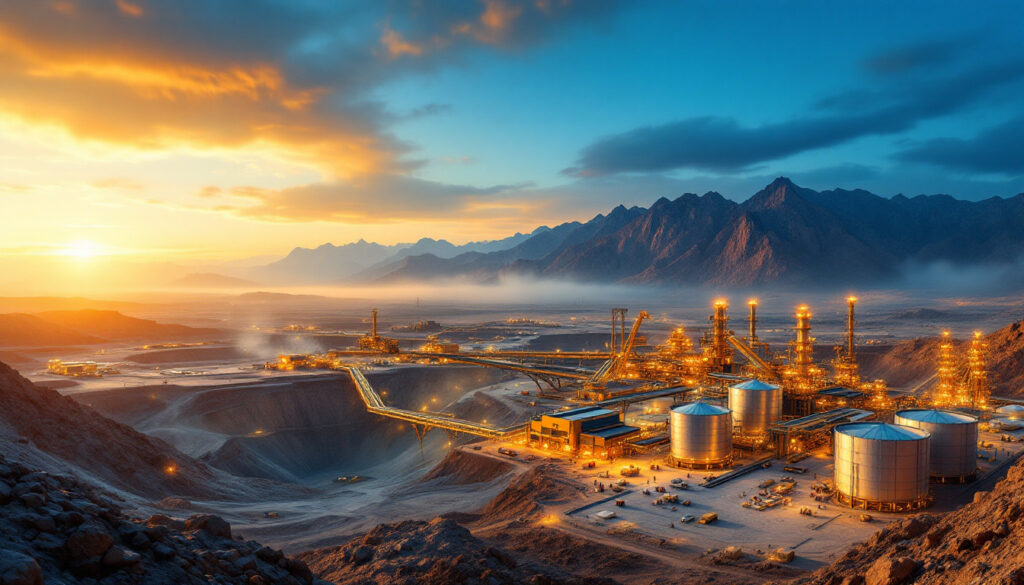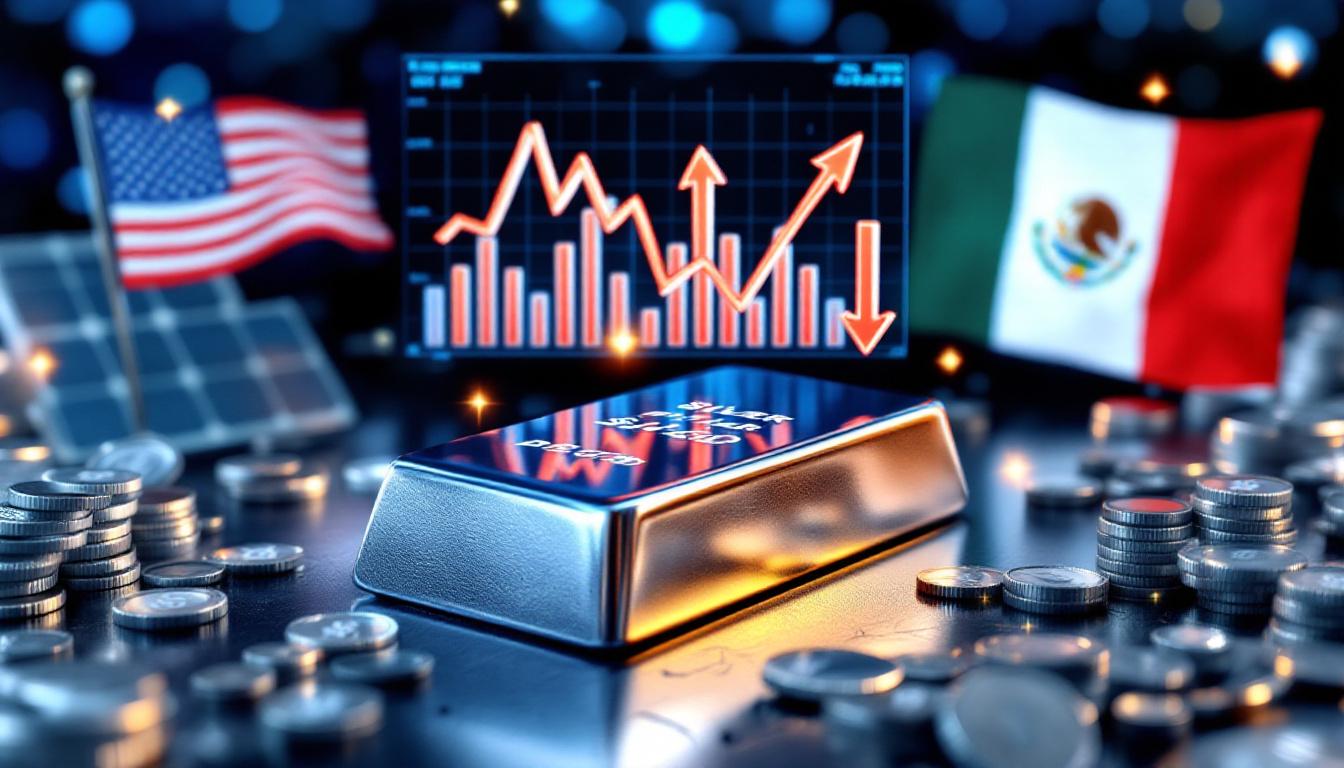Uzbekistan launches $2.6 billion initiative to bolster minerals sector 2025 has set a new benchmark in the country’s economic agenda. The ambitious investment strengthens the future of mining with modern techniques and strategic partnerships. Furthermore, the initiative is expected to drive sustainable growth across many sub‐sectors.
What is Uzbekistan's New Minerals Initiative?
Uzbekistan has embarked on an ambitious journey to transform its minerals sector with a substantial $2.6 billion investment announced on March 7, 2025. The strategic three-year plan (2025-2027) spans 76 projects targeting 28 different mineral elements. Consequently, the country is poised to become a key player in the global critical minerals market.
President Mirziyoyev outlined the initiative's core objective: "The main task is to extract valuable raw materials directly from ore using modern technologies." This shift from traditional exports to advanced processing techniques could greatly increase the value of the country’s mineral output. In addition, this model is similar to mining’s crucial role in the clean energy transition, which prioritises added value.
Specialised technology hubs will soon form in the Tashkent and Samarkand regions. These centres will encourage research, development, and training. As a result, local expertise is expected to flourish. Moreover, modern methods will replace outdated systems, leading to a more competitive industry. For more insights into technological advances, consider the ideas discussed in digital transformation in mining.
Furthermore, the initiative underscores the importance of minerals essential for emerging technologies. Rather than solely focusing on gold, the government now targets tungsten, lithium, titanium, and vanadium. These elements have high demand in aerospace, renewable energy, and advanced manufacturing sectors, ensuring a diversified economic future.
Why is Uzbekistan Investing in Critical Minerals?
The timing of this initiatives aligns perfectly with global market trends. Demand for critical minerals is expected to surge over the next decade. For instance, lithium demand is forecast to increase by over 500% by 2030, driven by electric vehicle battery production and renewable energy storage.
Uzbekistan holds significant untapped deposits that were historically underexplored. This situation presents a "geological opportunity gap" that modern technology can bridge. Consequently, the country is now addressing long-standing inefficiencies and is better equipped to harness its mineral wealth. In addition, international analysts are closely watching navigating global mining investments for detailed trends.
A key motivating factor is reducing dependency on major mineral producers. Currently, China dominates approximately 60% of rare earth element processing globally. Therefore, developing indigenous processing capabilities represents both an economic and a national security decision. International support is increasing, as seen in discussions with the US and European partners.
The initiative also aims to capture more domestic value. This is achieved by establishing local processing facilities rather than exporting raw materials. As a result, value capture could increase by 300-400% compared to traditional exports. Furthermore, this strategy has already started to generate buzz in global financial circles. Interested readers can explore macquarie's bold 2025 gold price forecast for related market trends.
What Critical Minerals Does Uzbekistan Possess?
Uzbekistan’s mineral resource base is remarkably diverse. Apart from famous gold deposits, numerous critical elements are found across various sites. In addition, these minerals hold significant strategic importance in modern technologies.
For example, tungsten deposits at Ingichka represent one of the flagship projects. Modernising processing at Ingichka is predicted to double the added value. With tungsten's high-temperature resistance and strength, its use in specialised steel production is unsurpassed. Moreover, such projects perfectly mirror themes in revolutionizing lithium production for clean energy discussions.
Lithium reserves in the eastern regions are particularly promising. Although geological surveys are ongoing, initial findings indicate both hard rock and brine deposits. Lithium is critical for battery production and energy storage systems. Consequently, Uzbekistan is well-positioned to support the energy transition supply chain.
Titanium, another important metal, has diverse applications. It is essential for aerospace, medical implants, and industrial components. The high purity in local titanium dioxide deposits means lower processing costs. Furthermore, investment in these areas opens up additional market opportunities.
Vanadium, while less publicised, may prove to be equally transformative. This element is integral for high-strength steel alloys and innovative vanadium redox flow batteries. Such batteries are expected to revolutionise grid-scale energy storage. Thus, the deposits could drive substantial growth in both domestic and export sectors.
Gold remains a crown jewel in Uzbekistan’s portfolio. Significant reserves at the Muruntau mine underscore the country's long-standing mining heritage. With proven and probable reserves exceeding millions of ounces, gold continues to be a cornerstone of national wealth.
How Will the $2.6 Billion Investment Be Allocated?
The multi-billion dollar investment is carefully distributed across several strategic areas. This deliberate allocation ensures maximum economic impact and sustainable development of the minerals sector.
• Infrastructure development will receive roughly 35% of the funds.
• Technology acquisition is set for approximately 30%, including state-of-the-art extraction equipment.
• Education and workforce development account for an estimated 15% of the investment.
• Environmental management is allocated about 12%, following international best practices.
• Geological surveys and exploration will benefit from the remaining 8%.
Infrastructure improvements are expected to upgrade transportation networks, power supplies, and water management systems. These upgrades are crucial for remote mining sites. Additionally, local communities will benefit from associated infrastructure projects.
The technology allocation will focus on importing advanced systems. For example, sensor-based ore sorting systems could reduce energy consumption by up to 40% and water usage by 30%. Consequently, these upgrades will contribute to more sustainable mining operations.
Education and workforce development are equally important. Specialized training programmes are planned to train over 10,000 technical specialists and engineers. The new technology hubs will offer both theoretical and practical experience, bridging the generational gap in technical expertise.
Environmental management receives significant focus as well. Projects include international best practices for tailings management, water recycling, and mine rehabilitation. Furthermore, these efforts aim to achieve ISO 14001 certification across the sector.
Finally, modern geological surveys will employ advanced techniques, such as satellite spectroscopy and artificial intelligence. These methods are revolutionising mineral discovery and quantification.
What Makes Uzbekistan's Gold Resources Significant?
The upcoming IPO of Navoi Mining and Metallurgical Company in Q3 2025 has drawn global attention to the country's gold resources. Valued between $15-20 billion, this public offering is expected to be one of the largest in recent history.
Muruntau’s geo-formation is of particular international interest. The mine is unique due to its consistent grade and extensive resource base. These characteristics make the project economically viable at almost any gold price. Additionally, environmental improvements, such as regenerative electric drive systems, have reduced diesel consumption by 25%.
Furthermore, water recycling systems at Muruntau now recirculate over 85% of process water. Such innovations are vital in addressing the sustainability challenges posed by the local desert environment. Consequently, these improvements have attracted examining eyes from major global investors.
Another significant factor is the current state of global markets. Gold prices have reached historic highs, improving project economics substantially. Therefore, the confluence of high gold prices and efficient processing techniques will likely drive large-scale foreign investment.
International financial news recently highlighted advantages in the gold sector. An external analysis on emerging markets from mining.com further emphasises the importance of gold in the current market.
How Does This Initiative Align With Global Geopolitical Interests?
Global geopolitical interests are increasingly intertwined with mineral investment strategies. The United States has already begun pursuing critical mineral partnerships with Uzbekistan. These discussions underline the strategic need for diversifying supply chains from dominant producers.
During a recent Central Asian tour, U.S. Secretary of State Marco Rubio stressed the “mutually beneficial opportunities for investment.” At the same time, the European Union is exploring partnerships under its Critical Raw Materials Act framework. In addition, Japan and South Korea are showing keen interest in forming technological and supply-based alliances.
Such diverse international engagement is designed to foster competition while maintaining high standards of environmental and social governance. Furthermore, these alliances also support national security and technological sovereignty. Consequently, this multi-pronged strategy is attracting a broad range of international investments.
China, still influential in the region, faces increasing competition. While maintaining its interests, it is now balancing its approach amid sustainable practice expectations. Hence, Uzbekistan must navigate complex diplomatic terrains to maximise benefits. Additional analysis on geopolitical trends can be found at uzbekistan critical minerals boost.
What Challenges Might Uzbekistan Face in Developing its Mineral Sector?
Despite promising outlooks, significant challenges remain. Firstly, technological implementation is critical. Modernisation of existing Soviet-era operations requires not only equipment upgrades but complete operational transformations.
Secondly, workforce development presents a pressing issue. With an estimated 40% of mining engineers approaching retirement, there is an urgent need to train new talent. Consequently, bridging this gap will be essential for future project success.
Furthermore, environmental management is paramount in the arid local context. Sustainable water usage, tailings management, and mine rehabilitation require continuous investments. Annual expenditure estimates of approximately $200 million highlight the scale of investment needed to meet international standards.
Finance remains another challenge, even with attractive commodity prices. Although gold projects are receiving investor interest, the prolonged payback periods for critical minerals present higher financial risks. Consequently, international financial institutions are demanding governance reforms alongside investments.
Finally, geopolitical competition adds complexity. Although international partners offer technological and market benefits, balancing these relationships involves navigating delicate diplomatic and commercial negotiations.
How Could This Initiative Transform Uzbekistan's Economy?
This ambitious minerals initiative promises a transformative economic impact beyond the immediate mining sector. Direct employment opportunities are projected to create nearly 50,000 jobs by 2030. These positions will be high-skill roles with wages substantially above national averages, thus creating a new professional class.
In addition, domestic manufacturing has considerable potential. By establishing local processing plants, Uzbekistan can boost its manufacturing base in equipment, chemicals, and support services. Consequently, this may add an extra 30,000 jobs and further industrialise the economy.
The export profile is also set to diversify from raw materials to value-added products. This transformation could boost mineral export values by 300-400%. In addition, value capture strategies have been successfully implemented in sectors elsewhere, such as copper processing in Chile.
Moreover, technology transfer from the mining sector is expected to benefit other industries. Automation, digitisation, and data analytics can spread into agriculture, manufacturing, and logistics. Therefore, broader technological adoption is likely to accelerate overall economic development.
Fiscal improvements will also be realised through increased tax revenues, royalties, and dividends. If managed transparently, these funds can support public infrastructure, education, and healthcare. Such fiscal benefits are essential for long-term development rather than short-term consumption.
FAQ: Uzbekistan's Minerals Sector Development
What are the largest known mineral deposits in uzbekistan?
Beyond the Muruntau gold reserve, Uzbekistan is home to deposits like the Yoshlik I and II copper-molybdenum fields, the Ingichka tungsten project, and the Ajaksu vanadium-uranium site. These resources are vital for a range of modern industrial and technological applications.
How does uzbekistan's initiative compare to similar programmes abroad?
Uzbekistan’s strategy is comparable to Chile’s lithium development and Australia’s minerals strategy. However, its mixed model of state investment combined with international partnerships stands out in terms of balance and sustainable growth.
What environmental safeguards accompany these mining developments?
All new operations must adhere to international environmental standards. This includes closed-loop water systems, mandatory environmental impact assessments, and proactive tailings management. In addition, independent third-party verifications are required to ensure ongoing compliance.
How will local communities benefit from the minerals expansion?
Community benefit agreements typically allocate 2-3% of operational profits towards local development. These agreements support infrastructure, education, and healthcare. Additionally, local content requirements, ensuring at least 30% regional sourcing, stimulate broader economic activity.
What investment opportunities exist for international mining companies?
Opportunities include joint ventures, equity investments, technical service agreements, and participation in Navoi Mining’s IPO. These prospects offer attractive long-term returns, particularly in technologically advanced projects like enhanced lithium, tungsten, and gold processing.
Uzbekistan's bold move to invest $2.6 billion in its minerals sector marks a turning point for both local and global markets. Furthermore, this initiative supports strategic diversification, modernisation, and sustainable development. By continuously addressing challenges and fostering international collaborations, Uzbekistan is poised to reshape its economic landscape and secure a leading role in the critical minerals market by 2025.
Looking for the next big mining investment opportunity?
Discover significant mineral discoveries as they happen with Discovery Alert's proprietary Discovery IQ model, which transforms ASX announcements into actionable investment insights. Explore historic mining discoveries and their impressive returns at Discovery Alert's discoveries page and gain a market-leading advantage today.




